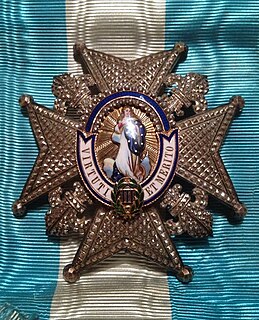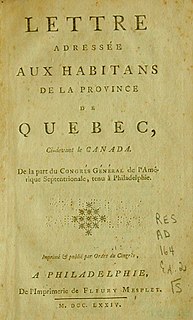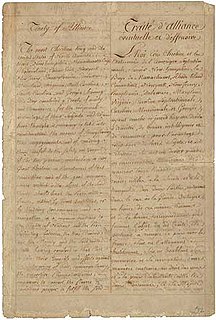 W
WThe affair of Fielding and Bylandt was a brief naval engagement off the Isle of Wight on 31 December 1779 between a Royal Navy squadron, commanded by Commodore Charles Fielding, and a naval squadron of the Dutch Republic, commanded by rear-admiral Lodewijk van Bylandt, escorting a Dutch convoy. The Dutch and British were not yet at war, but the British wished to inspect the Dutch merchantmen for what they considered contraband destined for France, then engaged in the American War of Independence. Bylandt attempted to avoid the engagement by offering the ships' manifests, but when Fielding insisted on a physical inspection, Bylandt put up a brief show of force, before striking his colours. The British then seized the Dutch merchantmen and conducted them as prizes to Portsmouth, followed by the Dutch squadron. The incident worsened the diplomatic relations between Great Britain and the Dutch Republic almost to breaking point. It also contributed to the formation of the First League of Armed Neutrality to which the Dutch acceded in December, 1780. To prevent their receiving assistance from other members of that League, Britain declared the Fourth Anglo-Dutch War shortly afterwards.
 W
WThe Carlisle Peace Commission was a group of British peace commissioners who were sent to North America in 1778 to negotiate terms with the rebellious Continental Congress during the American Revolutionary War. The commission carried an offer of self-rule, including parliamentary representation within the British Empire. The Second Continental Congress, aware that British troops were about to be withdrawn from Philadelphia, insisted on demanding full independence, which the commission was not authorised to grant.
 W
WThe Convention Army (1777–1783) was an army of British and allied troops captured after the Battles of Saratoga in the American Revolutionary War.
 W
WJohn Adams (1735-1826) was an American Founding Father who served as one of the most important diplomats on behalf of the new United States during the American Revolution. He served as minister to the Kingdom of France and the Dutch Republic and then was sent to help negotiate the Treaty of Paris to end the American Revolutionary War.
 W
WThe first League of Armed Neutrality was an alliance of European naval powers between 1780 and 1783 which was intended to protect neutral shipping against the Royal Navy's wartime policy of unlimited search of neutral shipping for French contraband. British naval commanders followed their instructions with care, ordered away boarding parties and made seizures with impunity. Four fifths of ships sailing, according to one estimate, made port in safety, but it was the loss of the other fifth that rankled. By September 1778, at least 59 ships were taken prize-8 Danish, 16 Swedish and 35 Dutch, not mentioning others from Prussia. Protests were enormous by every side involved.
 W
WJoseph-Mathias Gérard de Rayneval, was a French diplomat and government minister of the Ancien Régime.
 W
WThe Letters to the inhabitants of Canada were three letters written by the First and Second Continental Congresses in 1774, 1775, and 1776 to communicate directly with the population of the Province of Quebec, formerly the French province of Canada, which had no representative system at the time. Their purpose was to draw the large French-speaking population to the American revolutionary cause. This goal ultimately failed, and Quebec, along with the other northern provinces of British America, remained loyal to Britain. The only significant assistance that was gained was the recruitment of two regiments totalling not more than 1,000 men.
 W
WThe Olive Branch Petition was adopted by the Second Continental Congress on July 5, 1775, and signed on July 8 in a final attempt to avoid war between Great Britain and the Thirteen Colonies in America. The Congress had already authorized the invasion of Canada more than a week earlier, but the petition affirmed American loyalty to Great Britain and beseeched King George III to prevent further conflict. It was followed by the July 6 Declaration of the Causes and Necessity of Taking Up Arms, however, which made its success unlikely in London. In August 1775, the colonies were formally declared to be in rebellion by the Proclamation of Rebellion, and the petition was rejected by the British government; King George had refused to read it before declaring the colonists traitors.
 W
WLouis-Guillaume Otto, comte de Mosloy was a Germano-French diplomat.
 W
WThe Staten Island Peace Conference was a brief informal diplomatic conference held between representatives of the British Crown and its rebellious North American colonies in the hope of bringing a rapid end to the nascent American Revolution. The conference took place on September 11, 1776, a few days after the British had captured Long Island and less than three months after the formal American Declaration of Independence. The conference was held at Billop Manor, the residence of loyalist Colonel Christopher Billop, on Staten Island, New York. The participants were the British Admiral Lord Richard Howe, and members of the Second Continental Congress John Adams, Benjamin Franklin, and Edward Rutledge.
 W
WThe Treaty of Alliance or Franco-American Treaty was a defensive alliance between France and the United States of America, formed in the midst of the American Revolutionary War, which promised mutual military support in case fighting should break out between French and British forces, as the result of signing the previously concluded Treaty of Amity and Commerce. The alliance was planned to endure indefinitely into the future. Delegates of King Louis XVI of France and the Second Continental Congress, who represented the United States at this time, signed the two treaties along with a separate and secret clause dealing with future Spanish involvement, at the hôtel de Coislin in Paris on February 6, 1778. The Franco-American alliance would technically remain in effect until the 1800 Treaty of Mortefontaine, despite being annulled by the United States Congress in 1793 when George Washington gave his Neutrality Proclamation speech saying that America would stay neutral in the French Revolution.
 W
WThe Treaty of Fort Pitt, also known as the Treaty With the Delawares, the Delaware Treaty, or the Fourth Treaty of Pittsburgh, was signed on September 17, 1778, and was the first written treaty between the new United States of America and any American Indians, in this case the Lenape. Although many informal treaties were held with Native Americans during the American Revolution from 1775 to 1783, the only one that resulted in a formal document was signed at Fort Pitt, Pennsylvania, now the site of Downtown Pittsburgh. It was essentially a formal treaty of alliance.
 W
WThe Treaty of Watertown, the first foreign treaty concluded by the United States of America after the adoption of the Declaration of Independence, was signed on July 19, 1776, in the Edmund Fowle House in the town of Watertown, Massachusetts Bay. The treaty established a military alliance between the United States and the St. John's and some of the Mi'kmaw bands against Great Britain for the early years of the American Revolutionary War.